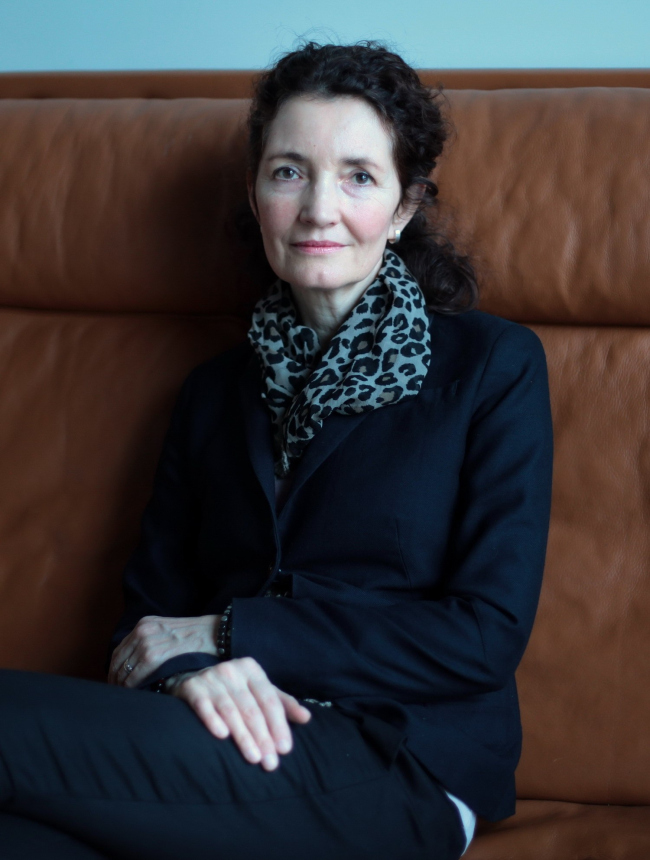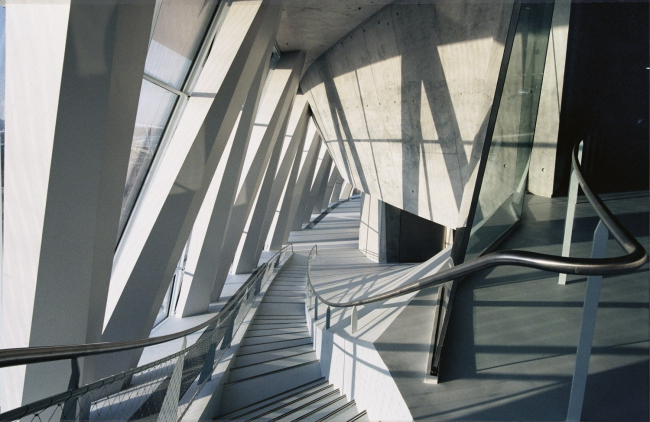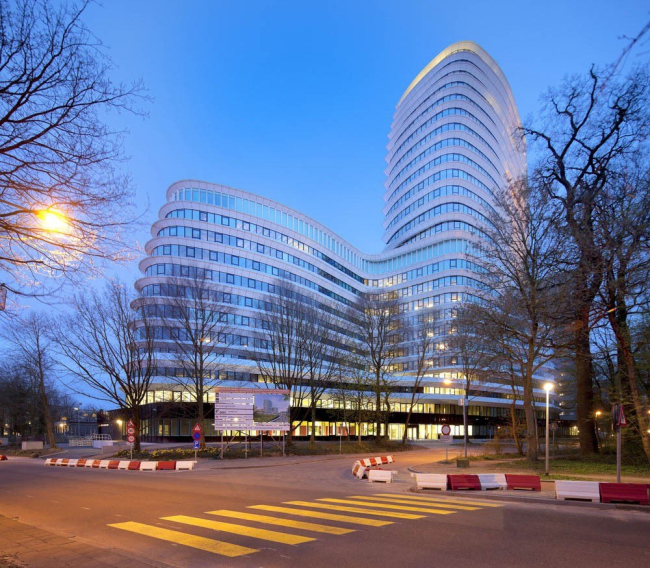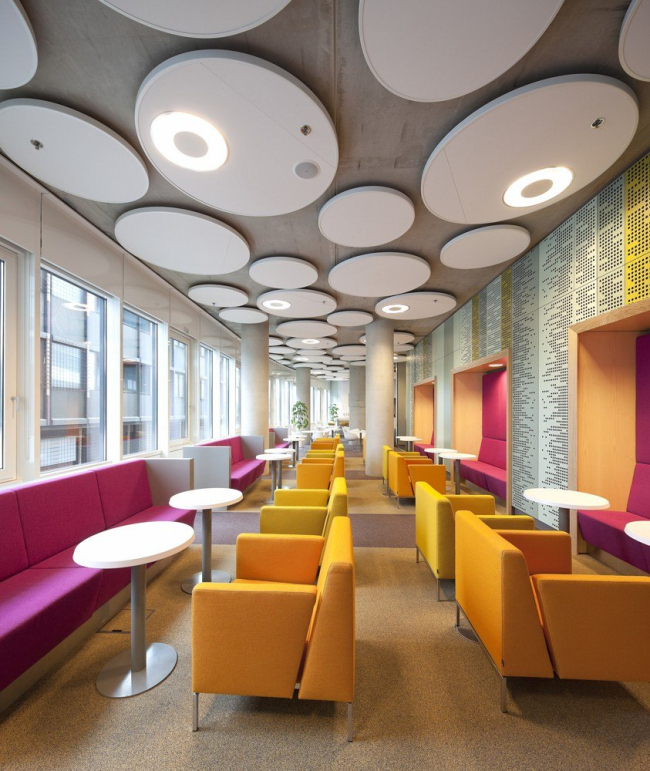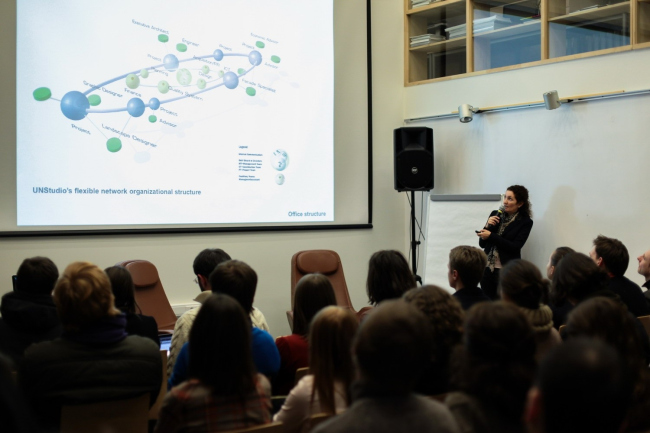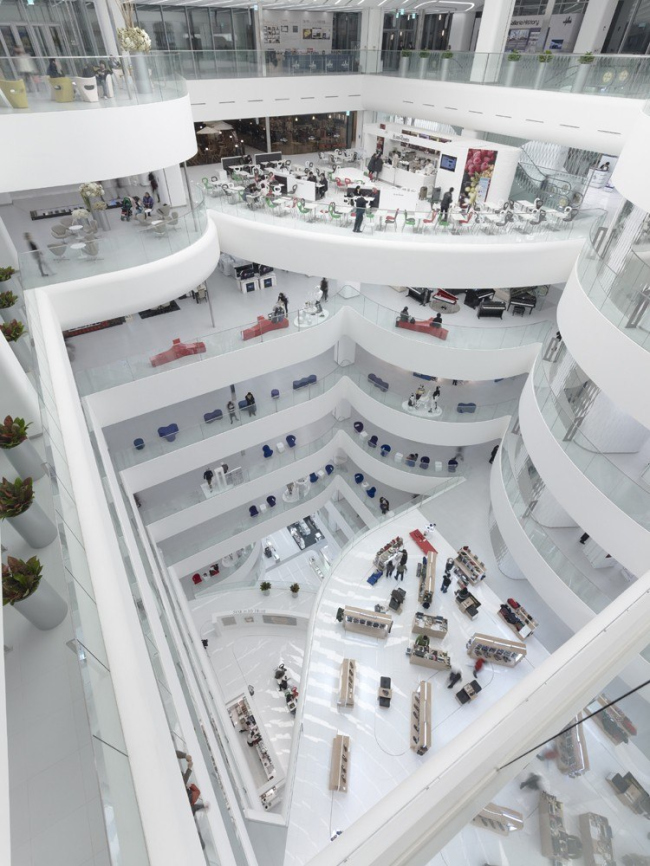|
Published on Archi.ru (https://archi.ru) |
|
| 25.03.2013 | |
|
Caroline Bos: We, architects, could do more than we think |
|
|
Nina Frolova |
|
| Studio: | |
| UNS | |
|
UNStudio co-founder Caroline Bos visited Moscow where she gave a lecture to the students of the Strelka institute and discussed architecture education and practice with Archi.ru Archi.ru: NoneArchi.ru: How would you describe your teaching method? Has it also changed with time? Caroline Bos: Yes, it has — a lot. For instance, 8 years ago I was teaching at Princeton and the focus was very much on organization: how do we organize the program, content, circulation, construction into an effective package. And now the focus is moving a little bit away from design per se: we have to think about the problems that architecture is faced with in a way that is not only project-related anymore. Of course, students still need to learn to design but they also need to learn to think far more about the real problems that we encounter in architecture and also about the technology that is needed to realize buildings today. Archi.ru: The research activity seems now to be crucial for any architecture practice. How could educators prepare their students for this task? I suppose it’s impossible to teach them economy, sociology, psychology and so on simultaneously to teaching them to design. Caroline Bos: Yes, it’s impossible to teach everything especially because knowledge is always changing, but we have to teach students to learn, to think, to innovate. They should learn the methodologies of thinking, analyzing how to approach design, so that they can practice for their whole working life. NoneArchi.ru: Are the students prepared to start their own practice when they get their degree? Caroline Bos: At the moment a small practice is very difficult to maintain. Practices are getting bigger, and small practices are very much under pressure. So I don’t think students are ready to practice on their own when they finish their studies: if they do their practice will always stay a very small firm with very small projects. I would recommend in the current climate to do some time at a large practice in order to gain more experience and also because it is there that more interesting work is taking place. NoneArchi.ru: So the research, the learning are central to the practice now. And how is the research activity organized at your practice? Caroline Bos: We have 4 knowledge platforms and everyone in our practice is also involved in knowledge development. This is completely integrated with the projects, so all knowledge is practice-related and it far more constitutes the core of the practice than design or the project itself. It is really about highly specific knowledge that is developed to make a project possible. A lot of architects experience difficulties when the construction of their building starts: all sorts of problems turn up — the budget is insufficient, or it turns out that there are technical problems, or there are regulation problems that put pressure on the design. And then you have to find ways to accommodate that and to solve those problems in a way that still keeps your design strong – and that is something that many architects never learn to master. They can’t work with restrictions and this just leads to compromise, or to frustration, or to an increase in the budget. But we can also learn to work in much smarter ways throughout the whole process, to be flexible, adaptable and also learn where you can make changes and where you can not make changes. Also how what we’re really talking about is how facades are constructed and so on. There is a lot of knowledge (often specialized technical knowledge) that we have gained through the series of projects and that has made it much easier for us now to keep being innovative and experimental with our practice within reasonable budgets and with short time limits also. Archi.ru: It is very interesting to know because architects are often complaining about all these things but rarely propose any solution. Caroline Bos: Yes, but we had to practice a lot to learn these lessons, we had to build a lot to learn these things. NoneArchi.ru: You have built a lot and in various countries around the world, and you have taught at the universities in various countries. The profession becomes increasingly more global now. How could one adapt to this new situation, because as far as I understand it is difficult to work in one country in the known circumstances but to work internationally is much more difficult. Caroline Bos: Yes, it is not easy, but it is also very interesting. It is something that we find enjoyable because it would be boring to always work within your limits, within your own expectations. It’s good to push yourself and to keep learning, to be forced to innovate, be forced to learn. If we stay too much within our comfort zone we will get stuck and we will not produce anything interesting. It is a part of the culture of architecture to push itself forward. Archi.ru: So globalization is a good thing from your point of view? Caroline Bos: Yes, I think that it is a very good thing, and also healthy. I have learned how much we all have in common — globalization is also about that. When I work with colleagues in China or here or in Korea or in Italy we have a common language: it is our profession and we have a common goal and it’s very great to experience that. And I think that in the future it will be very important: we are going to have to solve together the real problems of our world. It has to do with all the crises that we are dealing with, the - most of all - environmental crisis. So I think it is very important to learn to discuss, to exchange, to collaborate. NoneArchi.ru: What is the main challenge for an architect today? Caroline Bos: The main challenge is absolutely the sustainability challenge. We have to stop wasting resources, we have to build constructions that have more longevity, that can last longer and are adaptable and flexible, instead of buildings that have to be put up and taken down again because of any need for change. We have to think about making buildings more accommodating to the future and think of ways that lead to healthier life for people and the environment, a better future. Archi.ru: But not everything could be changed by the good intentions of an architect. There are also politicians, businessmen. How powerful is the influence of an architect now? Caroline Bos: I think that we could do more than we think. We have done some projects where we also analyzed stakeholder relations and we came up with insights that really changed the perception of what that project would be. For instance, in Asia we have done a few department stores that really are about the public space inside: a more cultural, dynamic experience was created with the result that it’s more like being in a museum. And these things have been possible because we imagined and visualized it and it became interesting to a client. So, as you say, you can complain and think “well, the client doesn’t allow me this or that” but you can also make a proposal and first take an initiative yourself to put forward your vision and then the reality can follow. NoneArchi.ru: You have a degree in art history – how has that enriched your practice as an architect? How important is this discipline for architecture students? Caroline Bos: I think that it is very important to know history: it is a living instrument, it’s really a tool that you can use as an architect. And this is also about a more analytical, thoughtful approach. I have already talked about the relationship between theory and practice but it goes both ways. Theory should not be taught in universities in a dry way — reading books and making summaries and taking an exam, but it should really be theory of practice. That I think is the most interesting topic in architecture. NoneNone None |
|
